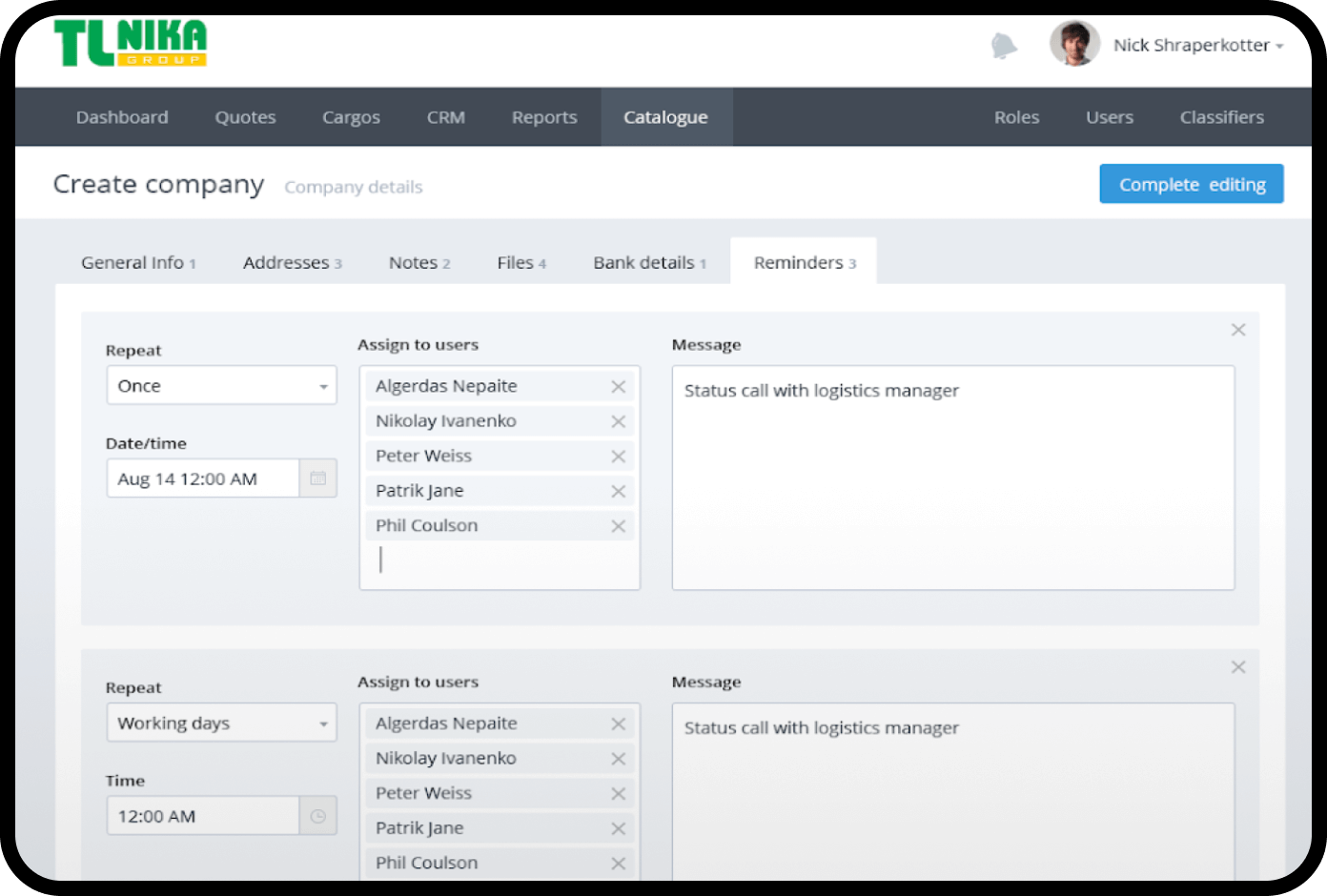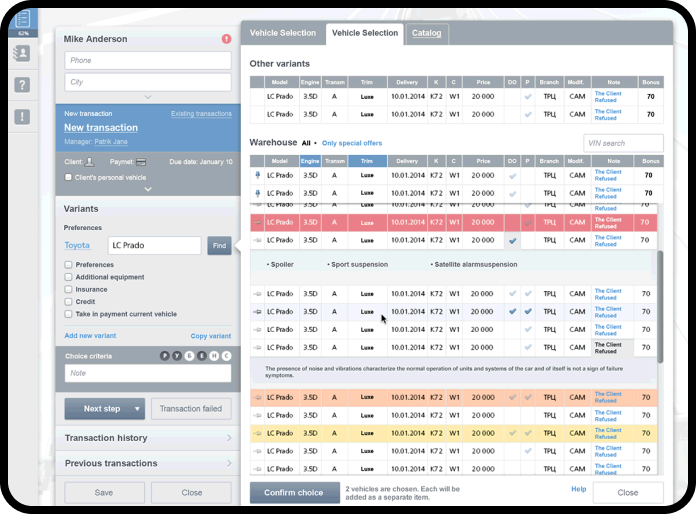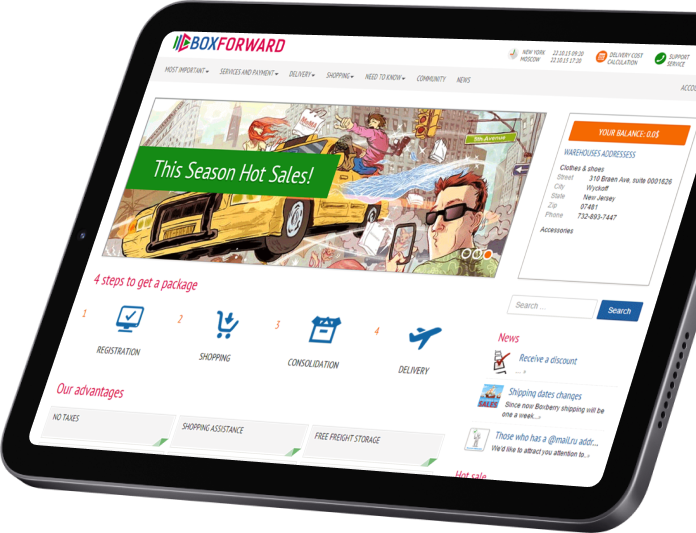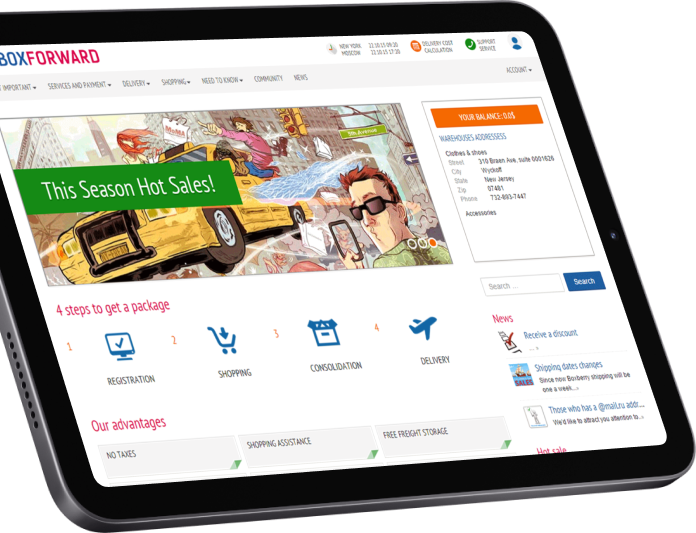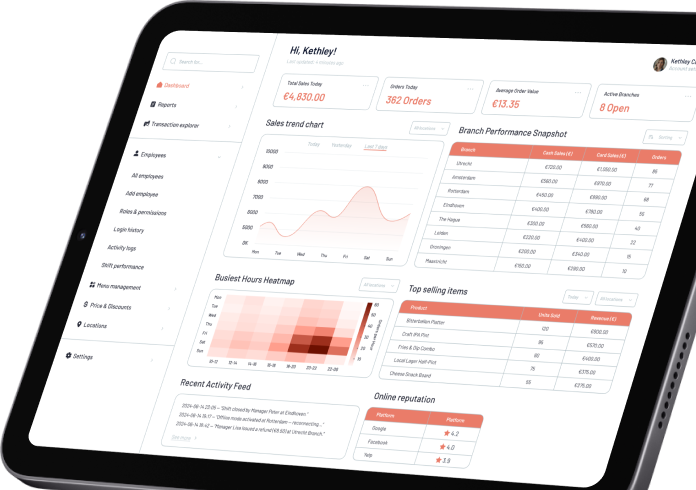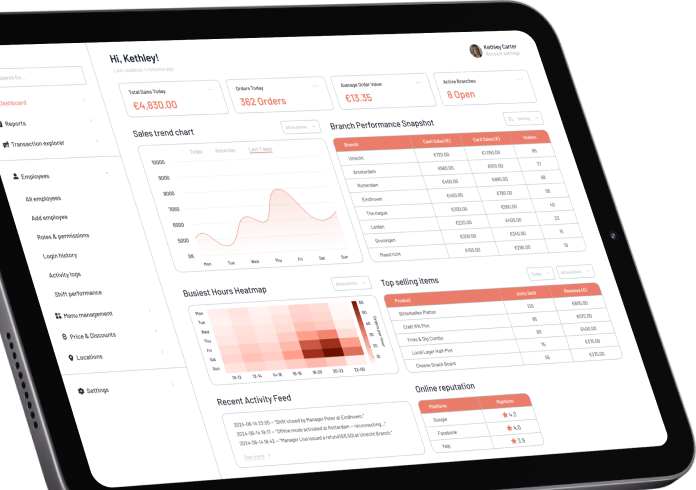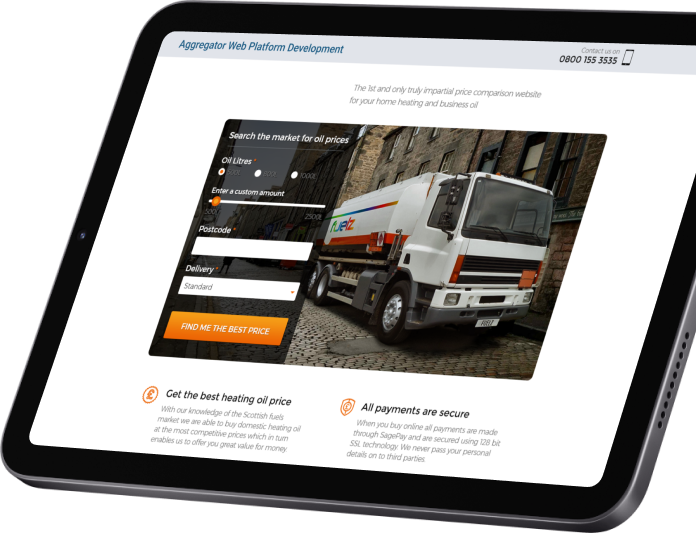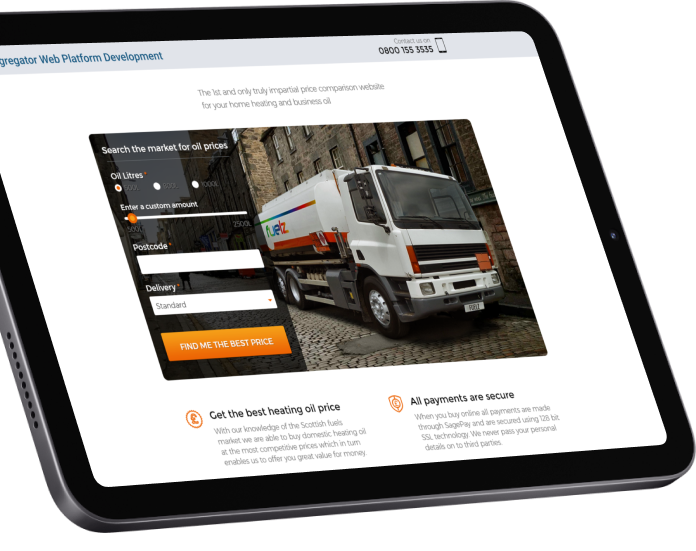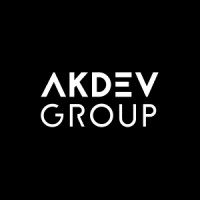
Logistics software development services
Streamline your supply chain, optimize routes, and enhance tracking with powerful logistics software tailored to your business needs. Our custom logistics solutions improve efficiency, reduce costs, and provide real-time data visibility, empowering you to stay ahead of the competition.
Business challenges we address
Lack of visibility
Disconnected systems and manual processes create blind spots in supply chain operations. We address this by integrating data across all logistics functions (transportation, warehousing, etc.) into unified platforms. A lack of visibility often leads to delays or stockouts that dissatisfy customers and damage your reputation, so we develop solutions that close this visibility gap by enabling real-time tracking and data sharing. Our supply chain dashboards and IoT tracking bring end-to-end transparency, so you always know where goods are and can act on issues immediately.
Inefficient operations
Legacy software and paper-based workflows lead to wasted time, high labor costs, and frequent errors. We help logistics providers automate and optimize their processes through custom software. For example, we introduce algorithms to maximize truck load utilization, eliminate manual data re-entry, and streamline warehouse picking routes. Automation and robotics in logistics can boost productivity by up to 25–70% and cut logistics costs by 20–40%. Our solutions allow you to handle greater volume without proportionally increasing headcount or expenses.
Unhappy customers
Customer satisfaction is heavily dependent on timely, reliable service and communication. Late deliveries and lost shipments erode trust. We develop logistics apps that help you enhance customer experience through technology by ensuring orders are fulfilled correctly and on schedule, and providing accurate delivery ETAs and live tracking portals. Our solutions empower you to leverage real-time data and predictive analytics, resulting in fewer complaints and higher customer loyalty.
Boost Your Bottom Line
Cut costs and increase efficiency. Discover how custom software can improve your profitability.
Why choose SumatoSoft
We offer distinct benefits that set us apart as a technology partner.
Deep logistics expertise
We have a proven track record in the logistics and transportation domain. See the case studies section to learn about how we developed freight management platforms, fleet tracking systems, warehouse solutions, and more. SumatoSoft has delivered custom solutions to logistics companies across the globe, contributing to their efficiency and growth. With over 250 successfully delivered projects since 2012, we bring seasoned knowledge to every new engagement.
Focus on ROI
Your business goals come first when we build a software solution for you. During the planning stage, we settle on a baseline and KPIs that might include cost per drop, on-time rate, first-attempt success, utilization, empty miles, fuel/km, dock-to-stock, pick rate, order cycle time, and inventory accuracy, calculate TCO, and build an ROI model. We make sure you escape vendor lock-in and make your software ownership predictable. As a result, you get a transparent, evidence-based ROI.
Agile and transparent process
We follow Agile principles and prioritize your KPIs, business goals, and values. Our processes are transparent to you at every stage of our collaboration: we provide regular reports and keep communication lines open at all times. We conduct weekly demos, work according to the CI/CD practices, and our test coverage is unmatched. You always stay informed about labor costs and all development metrics, so you can make timely decisions and get measurable results at each stage of the project.
Future-proof technology
The foundation of our solutions is a future-proof architecture, so they don’t become obsolete and scale with the business. We include modular API-first design with versioning and backward compatibility, microservices where justified, containers and Kubernetes with auto-scaling based on load, cloud portability for AWS, Azure, and GCP, and minimization of vendor lock-in due to open standards. We design data for growth and analytics and prepare contours for AI/ML and IoT. The result is predictable product evolution, controlled TCO, efficient scaling, and fast, glitch-free delivery of new features.
Experience
Following the best software development practices
Proven expertise in logistics software after 36,000+ hours of development
Open to sharing knowledge and experience
Speed
Following Agile (Scrum, Kanban) methodology
100% transparency of the process
Dedicated technical PO/PM/BA
Control
Clear and detailed time & cost estimates
Sprint and monthly reports, custom reports
Regular communications: calls, emails, chats, personal meetings
Custom logistics solutions we make
Transportation management systems (TMS)
The goal for integration of a transport management system is to centralize core operations and get a comprehensive view of them within one UI. The key TMS features are real-time GPS tracking, route optimization (which gets powered by AI lately), carrier management, and freight auditing. These capabilities help logistics providers deliver orders on time at lower cost due to reduced fuel consumption, improving profitability and customer satisfaction in the process.
Warehouse management systems (WMS)
A warehouse management system provides real-time inventory tracking and automates routine operations, including goods identification through barcode or RFID scanning, picking and packing of orders, and labor and shipping management. The ultimate goal of a WMS is to optimize staff utilization and boost accuracy and efficiency by reducing human errors.
According to an international trade association, digital warehouse solutions are critical for the operational efficiency of 80% of supply chain companies.
Supply chain visibility platforms (SCVP)
A supply chain visibility platform provides real-time tracking and analysis of goods from suppliers to end customers. It’s powered by IoT sensors and GPS devices to monitor shipments and inventory in transit.
In terms of analysis, such a platform gathers data across transportation conditions and warehouse inventory to make AI-powered predictions of possible issues and demand surges.
Fleet management solutions
Fleet management software helps you monitor your business’s vehicles and drivers’ behavior in real-time. These solutions pinpoint vehicle locations with GPS, run diagnostics, monitor fuel consumption, and assess driver performance. This data helps plan maintenance, reduce downtime, cut fuel expenses, extend the life of your vehicles, and improve safety.
Research indicates that using telematics and data-driven maintenance can reduce unexpected fleet downtime by as much as 50%.
Last-mile delivery solutions
Last-mile delivery solutions control the final stretch of delivery: automates dispatching and routing, taking into account road traffic and customers’ available time slots, provides delivery tracking to an operator and a customer, sends notifications, and provides an electronic proof of delivery.
Businesses leverage such solutions to optimize vehicle usage, reduce cost per drop, and increase on-time delivery rates. This also helps reduce the load of customer support, increase the transparency for customers and partners, manage load on the delivery service, and optimize capacity distribution.
We deliver a full suite of transportation and logistics software development services to address industry-specific challenges.
Transportation management systems (TMS)
The goal for integration of a transport management system is to centralize core operations and get a comprehensive view of them within one UI. The key TMS features are real-time GPS tracking, route optimization (which gets powered by AI lately), carrier management, and freight auditing. These capabilities help logistics providers deliver orders on time at lower cost due to reduced fuel consumption, improving profitability and customer satisfaction in the process.
Warehouse management systems (WMS)
A warehouse management system provides real-time inventory tracking and automates routine operations, including goods identification through barcode or RFID scanning, picking and packing of orders, and labor and shipping management. The ultimate goal of a WMS is to optimize staff utilization and boost accuracy and efficiency by reducing human errors.
According to an international trade association, digital warehouse solutions are critical for the operational efficiency of 80% of supply chain companies.
Supply chain visibility platforms (SCVP)
A supply chain visibility platform provides real-time tracking and analysis of goods from suppliers to end customers. It’s powered by IoT sensors and GPS devices to monitor shipments and inventory in transit.
In terms of analysis, such a platform gathers data across transportation conditions and warehouse inventory to make AI-powered predictions of possible issues and demand surges.
Fleet management solutions
Fleet management software helps you monitor your business’s vehicles and drivers’ behavior in real-time. These solutions pinpoint vehicle locations with GPS, run diagnostics, monitor fuel consumption, and assess driver performance. This data helps plan maintenance, reduce downtime, cut fuel expenses, extend the life of your vehicles, and improve safety.
Research indicates that using telematics and data-driven maintenance can reduce unexpected fleet downtime by as much as 50%.
Last-mile delivery solutions
Last-mile delivery solutions control the final stretch of delivery: automates dispatching and routing, taking into account road traffic and customers’ available time slots, provides delivery tracking to an operator and a customer, sends notifications, and provides an electronic proof of delivery.
Businesses leverage such solutions to optimize vehicle usage, reduce cost per drop, and increase on-time delivery rates. This also helps reduce the load of customer support, increase the transparency for customers and partners, manage load on the delivery service, and optimize capacity distribution.
And more
Revolutionize Your Logistics
Move beyond off-the-shelf limits. Create an innovative software platform designed for your unique needs.
Advance your logistics software
Internet of Things
In the US, the use of IoT technology is revolutionizing transportation and logistics software. IoT applications are especially beneficial for American logistics businesses in fleet management, vehicle tracking, route optimization, inventory management, and strategic planning.
Artificial Intelligence
Use the power of artificial intelligence to create applications that predict demand, modify orders, and re-route in-transit goods to warehouses where needed. With AI-powered applications, warehousing, predictive analytics, smart reporting and intelligent forecasting will evolve to the next level.
Big Data & ML
Machine Learning technologies are becoming an integral part of logistics software development services. They provide a comprehensive overview of the supply chain and impact processes such as purchasing, delivery, inventory management, maintenance, scheduling optimization, and accident prediction.
Our logistics software development process
First, we interview stakeholders, audit your processes, IT landscape, and data, and map required integrations with third-party systems. Then, we record the baseline and KPI, form business goals and MVP, and assess TCO, ROI, and risks. As a result of this step, you receive a clearly formulated vision and scope of the project, high-level architecture of the future solution, data flow, product roadmap, and preliminary estimates.
We model roles and user scenarios, make a customer journey map, create high-fidelity layouts, and design systems and clickable prototypes. We take into account scenarios for various device types and follow accessibility principles. We conduct quick usability tests and clarify texts and acceptance criteria. As a result, you receive a prototype, a UI kit or design tokens, screen specifications, and agreed acceptance criteria.
We work in short sprints and conduct demos for Clients at each increment. As mentioned above, we follow CI/CD principles, create separate environments for each stage of development, and conduct code reviews and static analysis. Our quality assurance follows the pyramid system with unit, integration, and end-to-end testing, and additionally, we conduct performance and security tests.
We come up with a release plan and follow it, migrate data, train users, and conduct proper software handover procedures to the Client’s IT team, and also transfer operational documentation and runbooks. In addition to regular technical maintenance and support, we provide a hypercare period after launch, with monitoring and alerting, SLA support, and handling incidents and change requests. Together with a Client, we jointly update the roadmap based on the results of metrics and plan development without increasing TCO.
Logistics software we developed
Start Your Transformation
The future of logistics is custom. Partner with us to build the software that will define your success.
Frequently asked questions
Does SumatoSoft have extensive experience creating custom solutions for the logistics and transportation industry?
Yes. We have proven expertise in transportation and logistics software development with over 36,000 accumulated hours worked on projects for our Clients.
We’ve developed and upgraded solutions such as TMS, transportation management modules, WMS, warehouse applications (scanning, accounting, pick&pack), supply chain visibility platforms (dashboards, ETA, alerts), last-mile (dispatching, routing, ePOD), telematics, and fleet monitoring (OBD, fuel, driver behavior). We’ve integrated Clients’ systems with their ERPs, CRMs, carriers, mapping, and payment services. The projects we worked on involved business analysis with industry expertise, design of user experience for different roles (dispatcher, driver, storekeeper, client), DevOps, and quality assurance with experience in load and integration testing.
When do you need custom transportation software development services?
Custom software is usually needed when a business realizes that standard products do not cover key scenarios or impose disadvantageous restrictions. Typical traits of a business that achieves better results and ROI with custom logistics software:
- Complex business processes, for example, many roles, SLA, delivery windows, multi-regionality,
- Requirement for integrations with different systems and providers. Out-of-the-box solutions often are not flexible and configurable enough, so they’re not able to provide stable connectivity.
- Requirements for scalability and fault tolerance, for example, during high-demand periods and seasonality, or with multiple warehouses in place,
- Unique algorithms and pricing models that give your business a competitive advantage, but aren’t attainable with a turnkey solution
- Strict security, compliance, and data localization requirements,
- A high share of manual operations and duplicate input.
Another criterion is economics: at certain volumes of operations, turnkey solutions and bypass costs begin to cost more than a one-time development with a predictable TCO. A compromise path is to start with a custom integration and UX layer on top of existing systems, then gradually transfer critical modules to your own solution.
How do you ensure data security during logistics application development services?
We make sure that security is part of the process from the start, not a step added later during the development.
We perform threat modeling and data classification (PII, payments, trade secrets), design access control by roles and sites (RBAC/ABAC), implement SSO/2FA, and the principle of least privilege. Data is encrypted “in flight” and “at rest”. SDLC includes SAST/DAST, code review, dependency scanning, branching policies, and mandatory tests.
On the infrastructure side, we implement network segmentation, WAF, logging, audit, backup and recovery plan, and key and certificate rotation policy. Logging of security and business events helps both us and our Clients investigate incidents and prove compliance with SLA/audit. According to a Client’s requirements, we take into account GDPR or other local regulations, conduct DPIA, and configure storage and data residency. For critical systems, we can organize a pen test with an independent provider and provide artifacts: security architecture, OWASP checklists, scan reports, and an incident response plan.
What is your pricing model for logistics software development services?
We work in three models: fixed price (fixed price for a clearly described volume), time and material (hourly payment for the actual work performed, there is an option with an upper limit, i.e., T&M with cap), and dedicated team (dedicated team for a monthly rate).
The choice depends on the specificity of the requirements and the project horizon. The assessment is influenced by the complexity of the domain and algorithms (AI routing, predictive maintenance), the number of roles and screens, performance and availability requirements, the volume of integrations (carriers, telematics, maps, payments, ERPs/CRMs), security and compliance, depth of analytics, and reporting. We make a transparent breakdown by roles (business analyst, user interface and experience designer, frontend and backend developers, quality assurance engineers, DevOps engineers), a calendar plan, and a release plan, then we agree on acceptance criteria and metrics. In T&M, you get detailed timesheets and burn-down; in fixed price, you pay by milestones, and in a dedicated team, you pay for controlled speed and predictable monthly burn.
Are there any hidden maintenance costs for transportation and logistics solutions?
There are no hidden costs, only planned ones.
Any software product requires support in the form of monitoring, alerts, dependency updates, security patches, response to changes in third-party APIs (carriers, cards, payments, SMS), infrastructure support (cloud, DB, storage, networks), backups, recovery tests, minor improvements, and user assistance. There are also operating costs associated with owning a software solution: cloud resources, paid geoservices, routing, notifications, telematic SIM cards, and licenses. We always make sure to form a post-release budget in advance, usually it’s 15-25% of the development cost per year, but the share depends on the criticality, load, and number of integrations. To ensure that TCO does not “float”, we include IaC and auto-scaling, budget maps and notifications, make alerts according to quotas, automate regressions, and document procedures. All such expense items are in your plan-fact and SLA; there will be no surprises.
SumatoSoft engagement models
Remember that you don’t have to choose one model once and for all. We often start with a fixed price model to deliver an MVP, and then move on to the time and material or dedicated team model for product development. Reach out to us and we’ll suggest the best option for your goals, risks, and budget.
Time & material (hourly model)
In this model, you pay for the number of hours worked at role rates. Volume can change from sprint to sprint, which is convenient for R&D. T&M format with an upper budget limit for the period is possible. It’s mostly suitable for MVPs, when requirements are uncertain, for quick experiments, and for integrating with third-party services.
Pros: maximum flexibility, quick hypotheses without difficult approvals on the terms of reference, payment only for the work performed.
Fixed price
This model fixes the cost and deadlines for a detailed scope. A short discovery phase often precedes this work model to remove uncertainties and provide an accurate estimate. Clients pay by milestones. It’s mostly suitable for well-defined modules with limited scope and strict budget and deadlines.
Pros: predictability of budget and dates, clear deliverables, and responsibility of the parties.
Dedicated team
If you choose to engage us as a dedicated team for your project, we will work as your remote department. You get permanent developers, QA, UX/UI designers, DevOps, project managers, and business analysts. A dedicated team is fully immersed in your project and has the logistics and transportation expertise. You get to manage priorities, while we’re responsible for quality development. This model best suits long-term product development when a stable pace and accumulation of expertise are needed.
Pros: high speed, flexibility without changing contracts, retention of contextual expertise, process transparency.
Cost factors of custom logistics software
Project complexity
The major portion of the price depends on a project’s volume and complexity. Since transportation and logistics solutions vary from a single mobile application for couriers to an enterprise platform combining TMS, WMS, last-mile, and analytical dashboards, we discuss each business idea individually with a Client to offer the best quality-price ratio.
The required number of roles and scenarios, the need for real-time operation, data volumes, and non-functional requirements, such as fault tolerance, SLA, security, compliance with standards (GDPR, ELD, etc.), increase the project complexity and its cost, respectively. The more complex the architecture and algorithms, the more development, testing, and integration circuits are required.
UI/UX design
The cost of the UX/UI design portion of the project depends on the labor intensity that the frontend requires.
We need to take into account the number of screens for different roles (dispatcher, driver, storekeeper, client), interactive maps, timelines, offline mode, barcode/RFID scanning, accessibility, and localization. A design system and prototyping with usability tests also require sufficient labor, but they help in the future to reduce errors.
Third-party integrations
The more integrations you need, the more complex the architecture might be, or just the time needed to configure everything properly.
This includes connecting ERPs, CRMs, carriers, marketplaces, telematics, OBD, cartography, and payment and tax providers. All these add value due to different API maturity, quota restrictions, format differences, certifications, and transition from sandbox to production.
Reliable integrations require queues, retries, idempotency, monitoring, and alerts, meaning sufficient time and effort for development and testing.
Team composition
The composition and seniority of the team directly affect the budget and speed. Not only developers are needed, but also a business analyst with experience in logistics, UI/UX, QA (including autotests), DevOps/Cloud, and sometimes data/ML specialists. A large team speeds up releases, but increases budget “burning” and the synchronization load; a small one is cheaper, but takes longer.
The optimal core is 4–6 people with the necessary competencies and transparent management.
Post-launch support
We recommend that you do not neglect post-release support. It includes monitoring, alerts, security patches, dependency updates, response to changes in third-party APIs, minor improvements, infrastructure maintenance (cloud, networks, storage), and SLA reporting. It’s also valuable to get post-launch user training and development according to the roadmap.
Budget support in advance; it’s sensible for your product evolution.
Project complexity
The major portion of the price depends on a project’s volume and complexity. Since transportation and logistics solutions vary from a single mobile application for couriers to an enterprise platform combining TMS, WMS, last-mile, and analytical dashboards, we discuss each business idea individually with a Client to offer the best quality-price ratio.
The required number of roles and scenarios, the need for real-time operation, data volumes, and non-functional requirements, such as fault tolerance, SLA, security, compliance with standards (GDPR, ELD, etc.), increase the project complexity and its cost, respectively. The more complex the architecture and algorithms, the more development, testing, and integration circuits are required.
UI/UX design
The cost of the UX/UI design portion of the project depends on the labor intensity that the frontend requires.
We need to take into account the number of screens for different roles (dispatcher, driver, storekeeper, client), interactive maps, timelines, offline mode, barcode/RFID scanning, accessibility, and localization. A design system and prototyping with usability tests also require sufficient labor, but they help in the future to reduce errors.
Third-party integrations
The more integrations you need, the more complex the architecture might be, or just the time needed to configure everything properly.
This includes connecting ERPs, CRMs, carriers, marketplaces, telematics, OBD, cartography, and payment and tax providers. All these add value due to different API maturity, quota restrictions, format differences, certifications, and transition from sandbox to production.
Reliable integrations require queues, retries, idempotency, monitoring, and alerts, meaning sufficient time and effort for development and testing.
Team composition
The composition and seniority of the team directly affect the budget and speed. Not only developers are needed, but also a business analyst with experience in logistics, UI/UX, QA (including autotests), DevOps/Cloud, and sometimes data/ML specialists. A large team speeds up releases, but increases budget “burning” and the synchronization load; a small one is cheaper, but takes longer.
The optimal core is 4–6 people with the necessary competencies and transparent management.
Post-launch support
We recommend that you do not neglect post-release support. It includes monitoring, alerts, security patches, dependency updates, response to changes in third-party APIs, minor improvements, infrastructure maintenance (cloud, networks, storage), and SLA reporting. It’s also valuable to get post-launch user training and development according to the roadmap.
Budget support in advance; it’s sensible for your product evolution.
Transportation and logistics software benefits for business
Operating cost reduction
Our software optimizes the “cost per drop” by routing based on traffic and plausible delivery slots, reduces empty runs and downtime, and controls fuel consumption and downtime during loading and unloading. We automate billing and freight audit, reduce manual input and errors, and integrate with maps, carriers, and payments. This makes the costs of labor and driven kilometers manageable and predictable.
Productivity and efficiency increase
We speed up end-to-end cycles: pick-and-pack routines in the warehouse, route formation, order processing, and document flow. System prompts and mobile scenarios reduce operational time and increase accuracy and throughput without proportional staff growth. Dispatchers deliver more parcels per shift, and storekeepers make more picks with fewer errors.
Customer experience improvement
Transparent ETA and real-time tracking and notifications reduce uncertainty for the recipient, increase on-time delivery, and the share of first-attempt deliveries. ePOD with a signature, photo, or barcode reduces disputes and returns, and a single customer portal reduces the customer support load, resulting in fewer requests and higher CSAT/NPS and repeat orders.
Unlimited scaling
We design logistics software with API-first architecture and modular design, so you can easily integrate with other systems to add warehouses, regions, carriers, and new features without downtime. Horizontal scaling in the cloud withstands peaks (seasonality, promotions), and a single data model and event bus support the growth of telemetry and order volumes. The system grows with the business, maintaining stability and predictable TCO.
Awards & Recognitions
Let’s start
If you have any questions, email us info@sumatosoft.com


